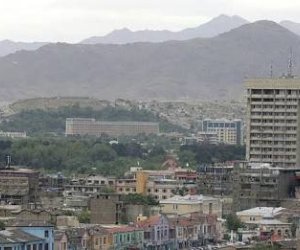Toxic waste 'major global threat'

More than 200 million people around the world are at risk of exposure to toxic waste, a report has concluded.The authors say the large number of people at risk places toxic waste in a similar league to public health threats such as malaria and tuberculosis, BBC reported.The study from the Blacksmith Institute and Green Cross calls for greater efforts to be made to control the problem.The study carried out in more than 3,000 sites in over 49 countries."It's a serious public health issue that hasn't really been quantified," Dr Jack Caravanos, director of research at the Blacksmith Institute and professor of public health at the City University of New York told the BBC's Tamil Service.The study identified the Agbobloshie dumping yard in Ghana's capital Accra as the place which poses the highest toxic threat to human life.The researchers say that the report has not been hidden from governments, and they are all aware of the issue.Agbobloshie has become a global e-waste dumping yard, causing serious environmental and health issues Dr Caravanos explained.The study says that "a range of recovery activities takes place in Agbobloshie, each presenting unique occupational and ecological risks".As the second largest e-waste processing area in West Africa, Ghana annually imports around 215,000 tonnes of second hand consumer electronics from abroad, particularly from Western Europe, and generates another 129,000 tons of e-waste every year.The study warns that that Ghana's e-waste imports will double by 2020.At the Agbobloshie site, the study found the presence of lead in soil at very high levels, posing serious potential health and environment hazards to more than 250,000 people in the vicinity.Chernobyl in Ukraine ranks second in the study, while the Citarum River Basin in Indonesia ranks third.Among the worlds top ten toxic threat sites as listed in the study, Africa, Europe and Asia have three sites respectively and Latin America one.Children at riskThe study says that tens of thousands of women and children are at risk due to toxic dumping and environmental pollution."These are sites that are releasing toxic chemicals into air, water and soil. These are sites where children are particularly at risk and the numbers are rather high. We have not hidden this list from the respective governments and they are all aware of the issue" said Dr Caravanos.He also agrees that the developed nations are part of this problem.Dr Caravanos told the BBC that many westerners buy products without knowing the environmental impact.He said Ghana actively wanted to progress in the IT field and as such started importing used computers from Europe 10 years ago. That had resulted in Agbobloshie becoming a dumping yard for e-waste from Europe.In some places the damage caused to the land is so huge that it cannot be reversed, so the only option is to move people away and seal the contamination. Heavy metals are very difficult to remove from the soil, Dr Caravanos pointed out.While the study sates that India has made significant progress in dealing with pollution issues on a national level, environmentalists and activists disagree with that observation.The World Health Organization, in conjunction with the World Bank, estimates that 23% of the deaths in the developing world are attributable to environmental factors, including pollution, and that environmental risk factors contribute to more than 80% of regularly reported illnesses according to the report.ANN.Az
Similar news
Similar news
Latest news 
More news 



































 Photo
Photo 



 Video
Video 

